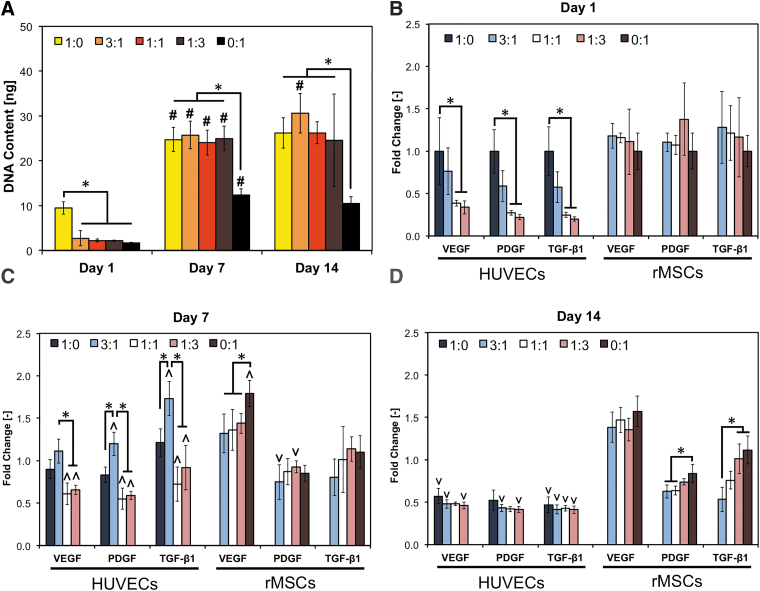FIG. 2.
Regulation of angiogenic/arteriogenic pathways in bioprinted hybrid cocultures. HUVECs and rMSCs were cocultured in five different ratios (1:0, 3:1, 1:1, 1:3, and 0:1) and analyzed after 1, 7, and 14 days for cell growth (A) and for the expression of key angiogenic/arteriogenic markers using RT-PCR (B–D, respectively). In panel A, data are reported as mean ± standard deviation (n = 6); “*” indicates statistical significance among different coculture ratios within each time point, while “#” indicates difference from the previous time point within each coculture ratio (p < 0.05). In (B–D), data are reported as mean ± standard deviation (n = 4), and “*” indicates statistical significance among different coculture ratios within each gene/time point tested (p < 0.05). Within each gene/group, a significant increase or decrease compared to previous time point is indicated by ∧ and ∨, respectively. HUVEC, human umbilical vein endothelial cell; rMSC, rat MSC; RT-PCR, reverse transcriptase–polymerase chain reaction.

